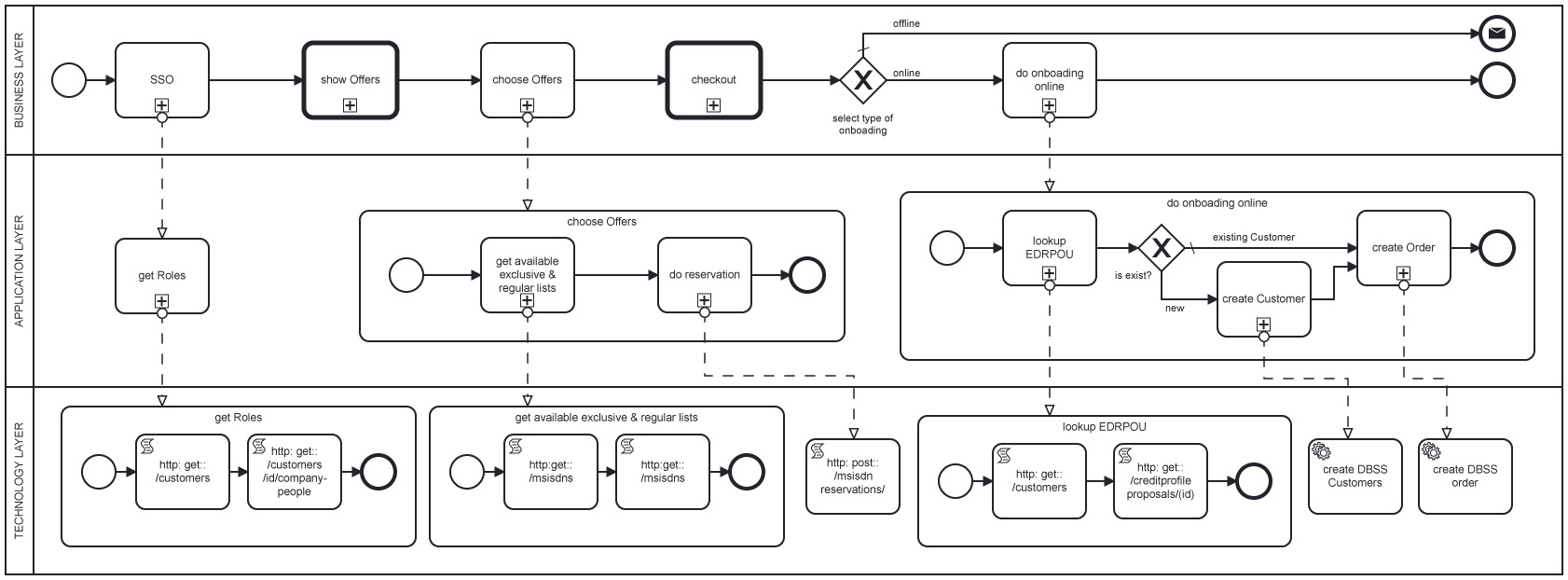Low-code platforms are popular in the world due to their transparency, low cost, and simplicity, they improve the management of business processes, and eliminate the intermediate costs associated with custom programming.
Adaptability and continuous improvement are the two defining characteristics of any modern business. Today, more than ever, perhaps the most important criterion for success is the ability to scale and adapt the potential of the business workflow to meet the ever-changing requirements. Business process management, or BPM, is an effective discipline designed to solve these problems.
BPM is the technical evolution of already-known concepts, such as task management, division of labour, and production. Over the past decade, companies have also begun to use BPM to analyze processes, measure productivity and identify opportunities for improvement – all in order to improve production efficiency.
Today, intelligence and automation are an integral part of BPM, so the term “intelligent management of business processes” or iBPM has appeared. Intelligence and automation take various forms, in particular, the digitization of business rules and intelligent analysis of processes. Automation of routine tasks, with little or no human intervention.
The main goal of iBPM is intelligent collaboration and orchestration of people, connected devices and applications to achieve business goals. However, in order to make informed decisions and better serve customers, companies need effective tools to access critical information in the right context.
In many organizations, this information is scattered across many ready-made and specially-created programs. The application of iBPM to such a fragmented environment varies from complex to completely impossible. A lot of time and other resources are spent on processing, as a result, employees are inefficient, and the customer experience suffers.
BPMN-based low-code platforms (hereinafter referred to as BPMN-code) offer more efficient solutions, closing the gap between the limitations inherent in ready-made software and the high cost of developing special programs from scratch. BPMN-code provides fast development of individual business applications and allows those who work with them to also become developers in some way.
So how valuable is low-code to BPM?
For many purposes of practical use of low-code, BPM is perhaps one of the most important. By handling things like workflow and process modelling in a visual environment, operating groups can easily optimize their settings and create applications to automate them. Instead of pure coding, they use intuitive and non-specialist graphic notation in business process diagrams to create process-oriented applications. The industry standard example of such development is the business process model and notation (BPMN), which is developed and maintained by Object Management Group, although there are others.
Processing workflows in a low-code environment allows users to apply business logic without any programming knowledge. The diagram used to develop the BPM application will indicate the beginning and end of the process, tasks and solutions, as well as their participants.
For example, a purchase request model can start when a customer places an order and end when the order is processed. In this case, the request can be authorized by the human operator, which means that a user interface element is also required to enable this interaction. BPMN-code provides a drag-and-drop interface for creating these user interfaces, similar to how visual website builders do, again, without the need for primary coding.

Once deployed, operating groups can track the performance of their processes using an interactive analytics panel. If a bottleneck or other problem arises, they will immediately know about it and will be able to take steps to fix it.
Open source BPMN-code goes even further, allowing users to add or modify object classes to fix more complex problems or develop entirely new features from scratch. Such platforms are the perfect solution for prototyping.
Let’s try to briefly analyze the main function that BPMN-code offers.
Prototyping acceleration
So, the main advantage is the saving of basic production resources: time and money. Compared to writing a new program from scratch, low code can reduce development time from 50 to 90%. Accordingly, you can actually create basic prototypes of applications (models, diagrams, algorithms, etc.) here twice or even three times faster than standard solutions. Thanks to low code, individual developers and small teams can experiment, prototype, and deliver applications in days and weeks, not months.
BPMN-code offers much simpler functionality, thus making application development accessible to a much wider audience. Any business user on the operational side will have the opportunity to master the workflow design and user interface elements in BPMN-code, not least because these options are already familiar with the business logic on which the platform is based.
Data-driven configuration
Another advantage is where the Rapid Application Development (RAD) approach works, where the principle of “first create and then optimize” operates without long delays between concept and release.
The main task is to automate routine operations. Change is the only constant in the digital world, and routine business processes should be able to adapt to them quickly. In the case of a purchase request, a bottleneck may arise during the authorization decision due to a larger number of purchase requests, for example, during holiday sales. Therefore, the workflow requires an update so that purchase requests below a certain price are authorized automatically and orders with a large budget are authorized exclusively manually. Plus, applying different solutions to different situations depends on which department makes the purchase request or what goods or services it concerns.

Low-code answers this question – in the form of interactive analytical panels that will identify such bottlenecks from the moment they occur. Operational teams can update the workflow based on this data, rather than waiting for complaints to arrive.
Using low code to unify data sources and automate processes, the user will be able to receive operational data in a standardized and comprehensive way. This data provides effective business intelligence by recording every transaction in the workflow and presenting it in a convenient visual form.
Simplified maintenance
BPMN-code makes it easy to implement changes and stay abreast of changes in the ever-evolving business environment. Adding a new function usually consists of dragging a new class of object or user interface elements into the constructor and recompiling the application. This also means that new non-professional developers are easily involved in maintenance tasks, since, after all, it is much faster and easier to make small changes than to re-develop and re-develop Deploy any application from scratch – even in a low-code environment.
In BPMN-code, non-professional developers can apply most updates using predefined business logic and object classes. This leads to a reduction in the load on DevOps or, in the case of third-party software development, reduced costs and time. Also, contrary to popular belief, this does not necessarily mean the growth of shadow IT teams. A lot of BPMN-code Allows role-based administrators to give permissions and thresholds for what can be changed, and through which quality control processes must undergo such changes before a program is launched.
Organizational independence
So, we analyzed the basic advantages of BPMN-code platforms in the field of creating the final software product with specific and limited time limits. So why should BPMN-code be chosen not only by the developer but also by the customer?
Each enterprise is unique in its operational infrastructure, so ready-made solutions often cannot meet demand, especially when it comes to niche, literally artificial industries. Effective applications for such customers cannot function as a cliché, most often they require unique development, where the creation and delivery of a software product, both from the point of view of internal and external, is, the end user depends on a variety of characteristics and therefore affects the value of full organizational ownership of the company’s workflows, projects and user interfaces. Businesses can design and optimize their processes according to their needs without having to worry about limiting ready-made software or, again, proprietary systems. The open source BPMN-code goes even further, giving businesses also full digital sovereignty over their data. Pure digital independence, so to speak.
Almost every organization relies on dozens or even hundreds of third-party apps and services. Too often, these heterogeneous systems lead to the accumulation of technical debt (accumulation of problems in the code, hastily solutions, the so-called “”) and all the inefficiency associated with them.
Using BPMN code to improve BPM allows you to regain control of your operating infrastructure because it’s easier to integrate and manage third-party applications from a centralized location. Even if the applications and services themselves can be hosted elsewhere and provided by different providers, the ability to manage everything in one place gives the user a Holistic View of his operations. In this way, the user can apply BPM and automate data that he trusts, rather than being limited by what one provider or his solution allows him to do.
With BPMN-code, you can optimize end-user experience based on stakeholder feedback. Thus, their experience no longer needs to be kept within the limitations of ready-made software. In other words, any feedback can usually be implemented quickly rather than waiting for the third-party provider to complete the update request.
The low-code ecosystem is constantly evolving, which increases its popularity. By significantly reducing barriers to entry, operational teams now have the tools at their disposal to develop their applications to manage and automate routine business processes. From back-office solutions to industry-specific applications, low-code enables you to consolidate and automate a range of business processes. In addition, all this working functionality can be adapted and optimized over time by identifying repetitive patterns in the data and new opportunities for improvement.
Performance of BPMN low-code platforms



 Sergej Polovnikov
Sergej Polovnikov